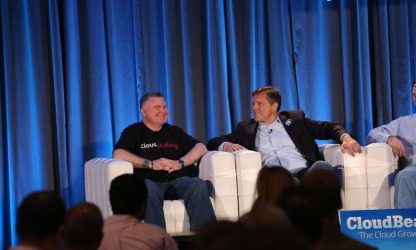 Desktop as a Service (DaaS) often is confused with virtual desktop infrastructure (VDI), but the reality is that neither name truly encompasses what each service can achieve. These two Cloud-based services, which businesses can purchase on a subscription basis, provide so many solutions that they really should be called Workspace as a Service.
Desktop as a Service (DaaS) often is confused with virtual desktop infrastructure (VDI), but the reality is that neither name truly encompasses what each service can achieve. These two Cloud-based services, which businesses can purchase on a subscription basis, provide so many solutions that they really should be called Workspace as a Service.
DaaS offers businesses unique solutions for the storage of data, backup of applications, and security needs. In this delivery model, the service provider manages the back end of a company’s storage of data and upgrades. To accomplish this, service providers copy that organization’s data from the virtual desktop. From there, they manage the back-end infrastructure while the company focuses on applications and security.
What fuels the popularity of DaaS?
Businesses adopt DaaS because of a set of tried-and-true benefits that truly distinguish the service as a workspace.
- Accessibility: Users can access DaaS solutions from any device with an Internet connection. This means that remote employees still can access the information they need.
- Better Communication: Easy access gives companies ample ways to stay in communication with clients and remote employees. Since employees have access to the files they need, they can collaborate on projects from virtually anywhere.
- Stability: DaaS providers also can help provide better back-end stability for businesses that may have encountered issues when using the desktop management system.
Why is DaaS misunderstood?
While it’s true that DaaS can resolve certain issues and improve a business’s communication, those are only a few of the core functions of DaaS. Quite simply, this service can achieve more than it’s being used for right now.
Many have approached DaaS with a narrow framework, and that mindset is limiting the application’s abilities.
- Limiting DaaS by confusing it with VDI: VDI uses a single server on one desktop to transfer data to another desktop on the provider’s network. This singular approach doesn’t mean that the user will experience better quality, nor does this model make good use of the infrastructure, especially when compared to other models that offer better efficiency. Confusing DaaS with VDI leads many to think that VDI’s limits are the limits of DaaS as well.
- DaaS and the desktop: One of the big misconceptions about DaaS is that you have to use a desktop to store applications. This isn’t true. A great example of this is Citrix XenApp, which uses Windows applications outside of a desktop.
- Single sign-on access: DaaS users can actually use a single sign-on as a portal of sorts. One example of this is Citrix Receiver, which directs users to a portal to access their DaaS desktops, applications, and web services that the IT administrator provides. This means that instead of thinking that a single log-in connects only to a single desktop, the mindset should be that a single log-in can give the user a portal through which they can access all the information they need.
- Mobile device management: Many DaaS providers now offer mobile device management services, which allow for BYOD controls in terms of compliance, security, and integrity of data.
- Follow-me data included: DaaS also has follow-me data that spans across all devices—not just a company’s desktop. Furthermore, the service provider administers all these centrally.
The narrow mindset surrounding this platform’s potential has undersold the abilities that it can deliver. The true potential of DaaS exceeds what many have thought. It’s truly a workspace—not just a desktop.



